Josh Kilmer-Purcell's Blog, page 11
March 16, 2018
The Almanac Asks: Why Do Some Plants Eat Animals?
We usually imagine plants to be peaceful, quiet organisms thriving on water, sunlight, and the occasional sprinkling of fertilizer. We may think of them as sources of food, or clothing, or simple decoration. Some plants are less cooperative, however, having developed complicated strategies for the capture and digestion of protozoa, insects, and even small invertebrates. These mechanisms can be passive, like the sticky or slippery appendages of the sun dew and pitcher plants, or as active as the snapping shut of the Venus flytrap and waterwheel plants. In fact, while carnivory is certainly an unusual trait in plants, it is far from a trivially rare adaptation, and has evolved independently in several plant lineages. How and why these different kinds of carnivorous plant species developed a similar taste for “more advanced” organisms remains a mystery.
Because many carnivorous plants are found in bogs and marshes, one theory is that they were forced to develop these kinds of coping mechanisms in the face of low-nutrient, swampy environments that are inhospitable to photosynthesis. We don’t know precisely how gradual evolutionary change led to this adaptation, though. What kind of leaf-tip mutation would have conferred sufficient advantage, such that the vacuum trap of the bladderworts could have begun to develop? And how did the necessary digestive juices and metabolic processes for carnivory happen to arise at the same time? Suffice it to say, some plants have bucked their traditional reputation as harmless food, instead taking on a more predatory role.
Text by Margaret Smith with illustration by Jim Stoten
As featured in the Spring 2017 Edition of Beekman 1802 Almanac Magazine. For more check out The Where, the Why, and the How: 75 Artists Illustrate Wondrous Mysteries of Science[image error] published by Chronicle Books 2012.
The post The Almanac Asks: Why Do Some Plants Eat Animals? appeared first on Beekman 1802.
The Almanac Asks: Why do some plants eat animals?
We usually imagine plants to be peaceful, quiet organisms thriving on water, sunlight, and the occasional sprinkling of fertilizer. We may think of them as sources of food, or clothing, or simple decoration. Some plants are less cooperative, however, having developed complicated strategies for the capture and digestion of protozoa, insects, and even small invertebrates. These mechanisms can be passive, like the sticky or slippery appendages of the sun dew and pitcher plants, or as active as the snapping shut of the Venus flytrap and waterwheel plants. In fact, while carnivory is certainly an unusual trait in plants, it is far from a trivially rare adaptation, and has evolved independently in several plant lineages. How and why these different kinds of carnivorous plant species developed a similar taste for “more advanced” organisms remains a mystery.
Because many carnivorous plants are found in bogs and marshes, one theory is that they were forced to develop these kinds of coping mechanisms in the face of low-nutrient, swampy environments that are inhospitable to photosynthesis. We don’t know precisely how gradual evolutionary change led to this adaptation, though. What kind of leaf-tip mutation would have conferred sufficient advantage, such that the vacuum trap of the bladderworts could have begun to develop? And how did the necessary digestive juices and metabolic processes for carnivory happen to arise at the same time? Suffice it to say, some plants have bucked their traditional reputation as harmless food, instead taking on a more predatory role.
Text by Margaret Smith with illustration by Jim Stoten
As featured in the Spring 2017 Edition of Beekman 1802 Almanac Magazine. For more check out The Where, the Why, and the How: 75 Artists Illustrate Wondrous Mysteries of Science[image error] published by Chronicle Books 2012.

1
Spring 2017 Almanac

2
Summer 2017 Almanac

3
Autumn 2017 Almanac

4
Winter 2017 Almanac
Visit the Mercantile
The post The Almanac Asks: Why do some plants eat animals? appeared first on Beekman 1802.
Life Lesson | Inspiring others
“If you want to build a ship, don’t herd people together to collect wood and don’t assign them tasks and work, but rather teach them to long for the endless immensity of the sea.” – Antoine de Saint-Exupery
We always say that the biggest compliment anyone can give us is to tell us that something we’ve created has inspired them.
People often ask what year we started Beekman 1802, and while it’s true that 2009 is the year that we started the farm and the company, it’s also the year that we started living the mantra of the brand. Along the way we’ve built a small team of employees and a legion of “neighbors” around the world.
We think often about what it means to inspire others and here is what we’ve learned to be the essentials of doing so.
SHOW YOU CARE
With all the intricacies and turmoil of the modern world, it can seem overwhelming just to keep your head above water, but the first step in inspiring anyone is to show them that you care. In this day and age, you can communicate that with something as simple as a “like” or “fav” on social media.
BE OPTIMISTIC
The number one reason that neighbors tell us they like to hang around Beekman 1802 (whether it’s in our store, online, or on visits to our little village) is because of our relentless optimism and positivity. We are not unique creatures. We, too, have negative thoughts and sometimes bitter opinions, but creating non-judgmental spaces and seeking out beauty in the world is transcendental.
BUILD PEOPLE UP
People are not perfect, and there’s no shortage of people who will line up to point out our flaws. Be the person who finds the good in everyone, even good in imperfection.
ADMIT YOUR MISTAKES
Fact: mistakes happen. We are always the first to say if we’ve messed up a project, missed a typo or burned the toast. There should be no shame in showing that life is not perfectly edited all the time.
BE A DREAMER
Be the person who is always asking why, how, and what if. Curiosity is contagious, and if we ask those questions often enough dreams move from improbable to inevitable.
The post Life Lesson | Inspiring others appeared first on Beekman 1802.
5 Modern Day Life Hacks
We always seem to have these pesky little obstacles in our life that can make things difficult – a dull razor, way too many bugs while camping, a scuffed shoe. Luckily for us, these first world problems are easily resolved with old-school solutions.
DESPERATE FOR A SHOE POLISH?
Try rubbing the leather with the outside of a banana peel.
BUTTON COMING LOOSE?
Use clear nail polish to secure the threads before they unravel completely and your button is lost.
DULL STRAIGHT RAZOR OR DISPOSABLE BLADES?
Sharpen the first on the bottom of a ceramic mug; sharpen the latter along the trim of denim.
SHORT ON SPACE FOR PACKING?
Roll – don’t fold – your clothing; putting small product bottles or tubes at the center of the rolls.
BUGGY CAMPSITE?
Throw sage into the campfire to fend off mosquitoes and stop them from feasting on your skin.
As featured in the Spring 2017 Edition of Beekman 1802 Almanac Magazine. For more check out MANMADE: The Essential Skincare & Grooming Reference for Every Man[image error] by Chris Salgardo. Published by Pam Krauss Books, an imprint of Penguin Random House, LLC.
The post 5 Modern Day Life Hacks appeared first on Beekman 1802.
March 7, 2018
Mini Floral Arrangements
How easy is this little table decoration? Brent puts them at each place setting for spring dinner parties.
Materials
Eggs
Flowers (you can use real or silk flowers)
Egg holders
Directions
Gently crack the top of the eggs and drain the whites and yolk
Peel off the top of the egg shell
Clip the flowers to your liking and arrange in your eggs
Place on the egg holder and display
The post Mini Floral Arrangements appeared first on Beekman 1802.
DIY Watercolor Flowers
One of our Team Beekman members brought these eggs in to help decorate the Mercantile for Spring. We thought they were so pretty that we asked her to show all the Neighbors how she did it. Even if you’re not super-artistic, they’re really easy…and hard to mess up.
Materials
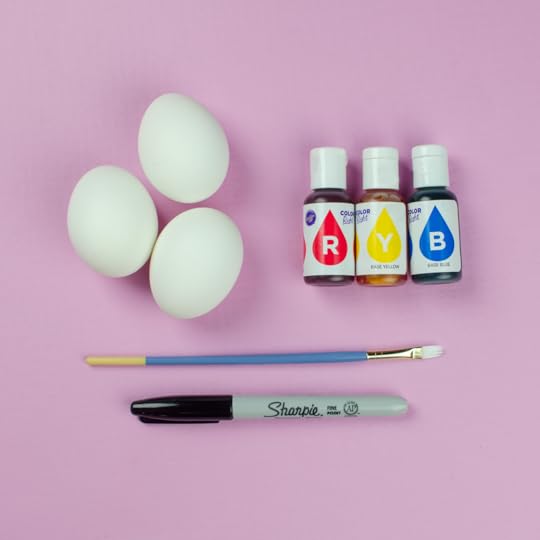
Color Dye
Brush
Sharpie
Eggs
Instructions

Put your dye into small disposable cups with water, one cup for each color of your choice.
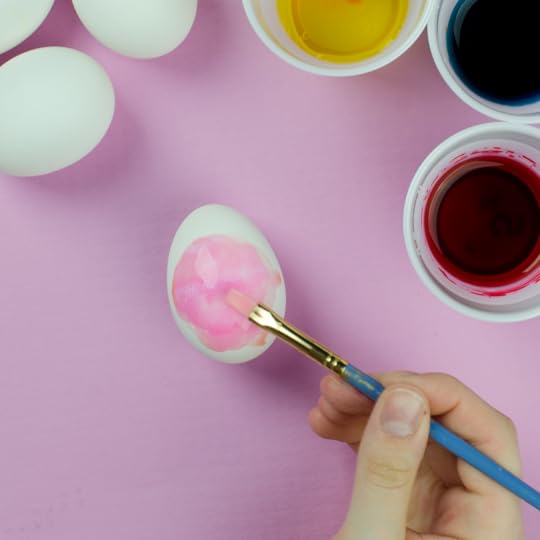
Dipping your brush into the first color of your choosing, paint onto the egg.
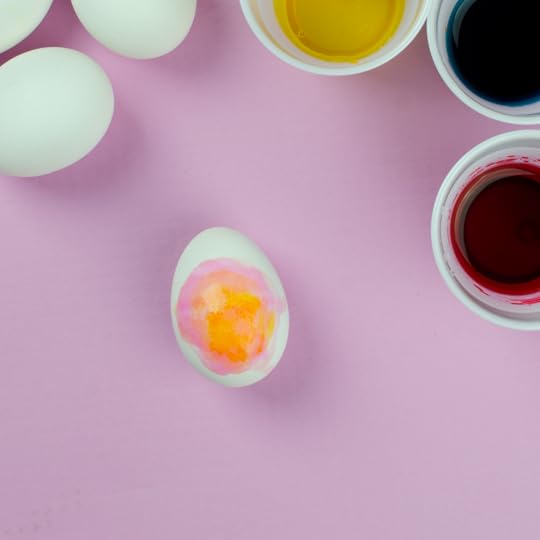
Take a second single color and paint a smaller section on top of the center of the first one, creating a center to your flower.
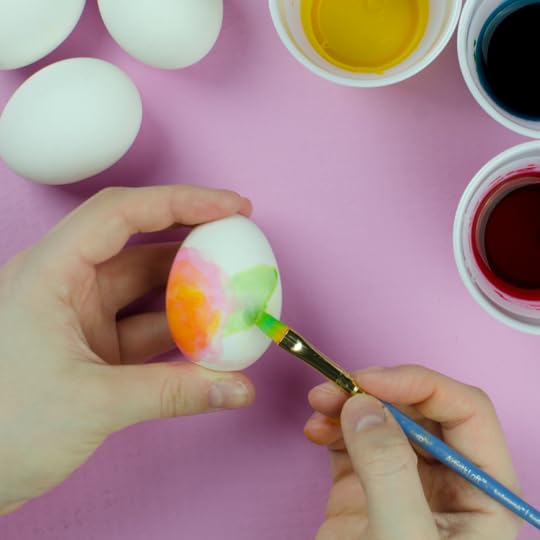
Add leaves to the sides of your flowers.
Allow the egg to dry completely.
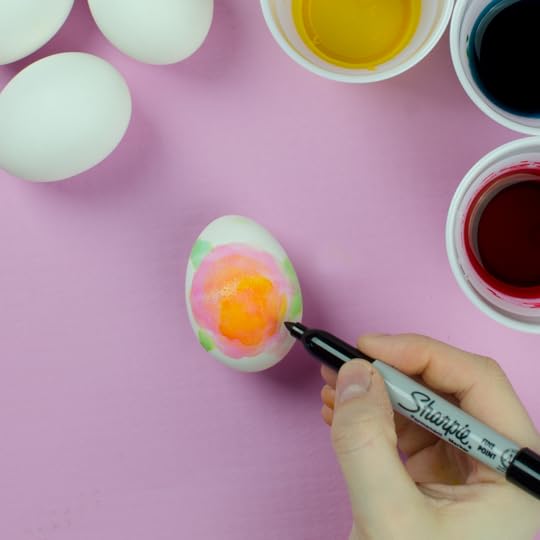
Take your sharpie and draw line around the outside of the shape, defing the flower. Your lines don’t need to be fully inside, outside or along the edge of the color.
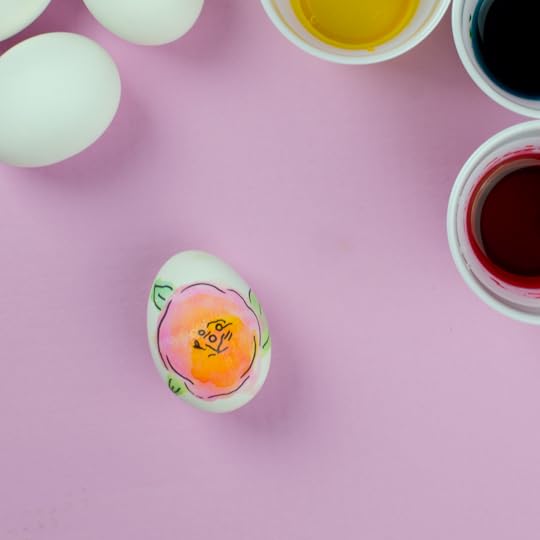
To draw the center of the flower you can make dots for pollen. The shape in the center can be wild and freeform.
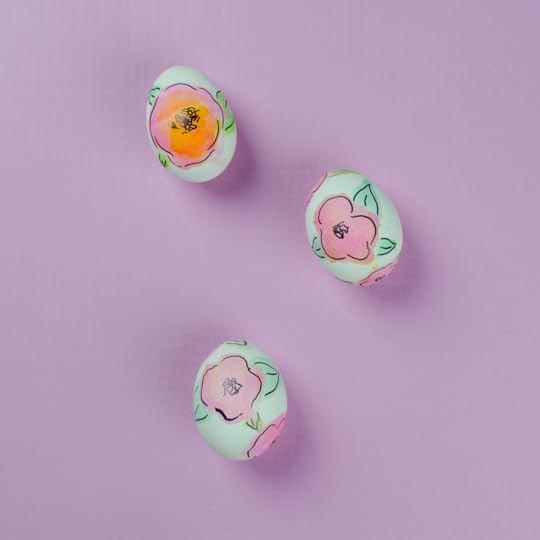
The post DIY Watercolor Flowers appeared first on Beekman 1802.
March 6, 2018
Spoke too soon…
Last week we told you about all of the repairs around the farm that needed to be done now that the winter’s snow had melted. Silly us. Snow doesn’t melt in Sharon Springs in March. It simply steps out for a second. And it came roaring back with a vengeance two days after we wrote that last post. In fact, last Friday we had the most snow we’ve ever had in one day since we moved to the farm: 40 inches.
Yes you read that right…40 inches in one day.
You probably didn’t hear about our snow on TV. Because unlike most major metropolitan areas, we don’t name our storms or call them things like “BOMB CYCLONES!” We still use the old fashioned word: “Blizzard.” In fact, the old timers call it…well…they just call it: “Snowing.” Or: “This ain’t nowhere near as bad as 1953.”
People here don’t get into fights in the supermarket over the last loaves of bread and milk. If we don’t have bread in the house, we bake it. And if we need milk, we milk something. If there’s a fire or emergency call during a blizzard, local residents are standing by, ready to use their pickups to plow through the storm to help the volunteer firemen & volunteer EMTs get through. When the power goes out, we start a fire. And if the power stays out, we transfer the stuff in the freezer to a snow drift. The Governor declared a State of Emergency for our county and banned all cars from the roads. But at most we were in a State of Minor Aggravation, and we’re not stupid enough to drive during a blizzard anyway.
Still, though, 40 inches is pretty impressive. So we thought we’d take you on a walk around the farm again…or at least as far as we could make it out the door…









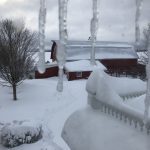
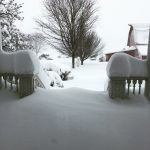


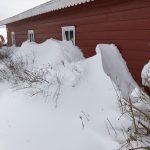








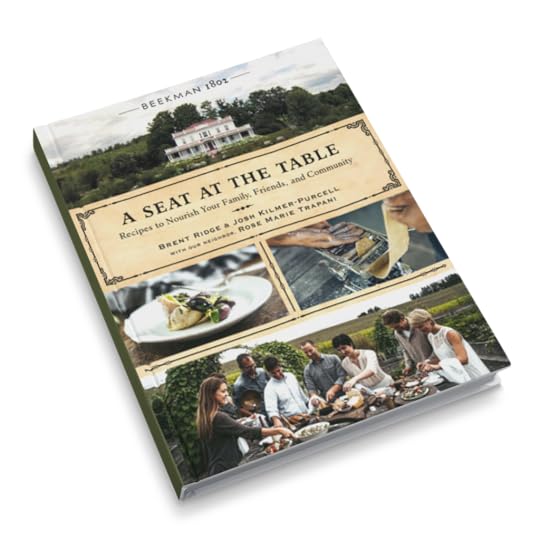
1
A Seat at The Table

2
Heirloom Vegetable

3
Heirloom Dessert

4
Heirloom Cookbook
Visit the Mercantile
The post Spoke too soon… appeared first on Beekman 1802.
March 1, 2018
DIY Natural Eggs
Most of our chickens lay brown eggs. But that doesn’t mean we can’t decorate ’em!
Materials
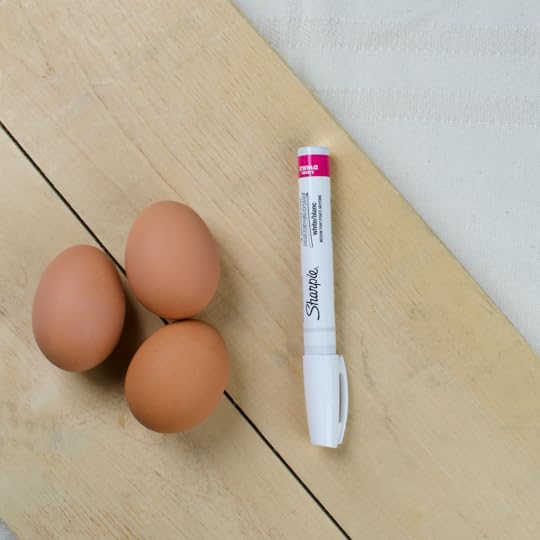
Brown eggs
White paint marker (Silver or Gold works too!)
Instructions

With a white paint pen, draw a pattern or design of your choosing directly onto brown eggs.
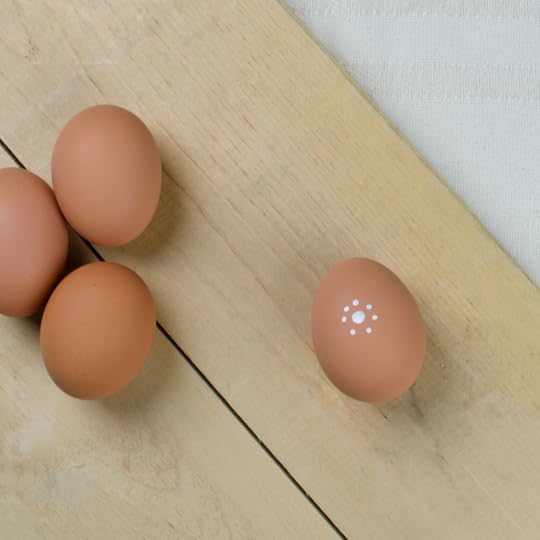
Continue the pattern around the entire egg.
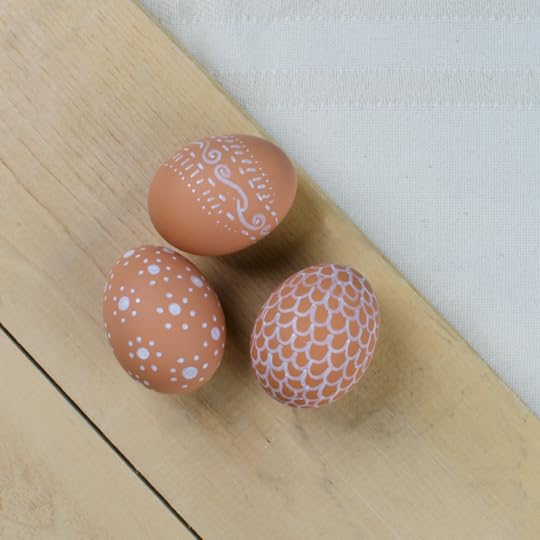
Make each egg a different pattern for an added surprise to this simple DIY.

1
A Seat at The Table

2
Heirloom Vegetable

3
Heirloom Dessert

4
Heirloom Cookbook
Visit the Mercantile
The post DIY Natural Eggs appeared first on Beekman 1802 Mercantile.
18 Facts about Goats
Did you know that goats were one of – if not the – first animals to be domesticated? Here are 18 facts (plus 02 bonus ones, of course) about our favorite animals…
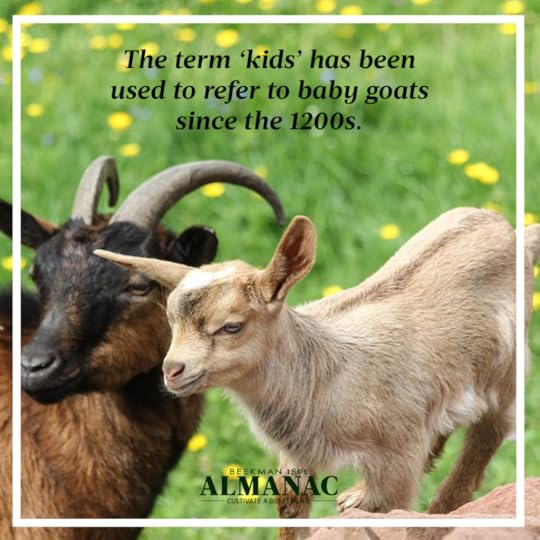
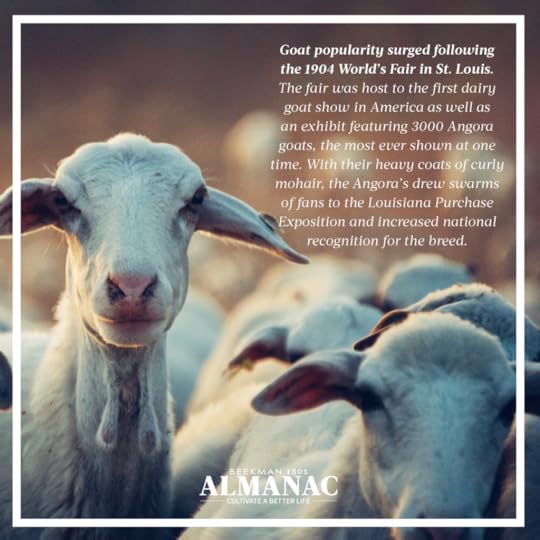
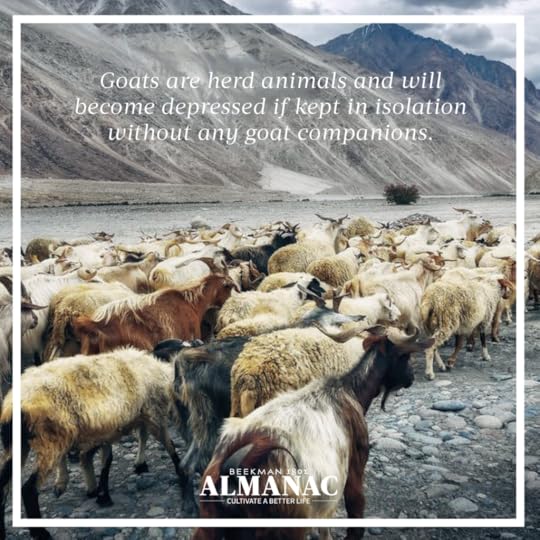
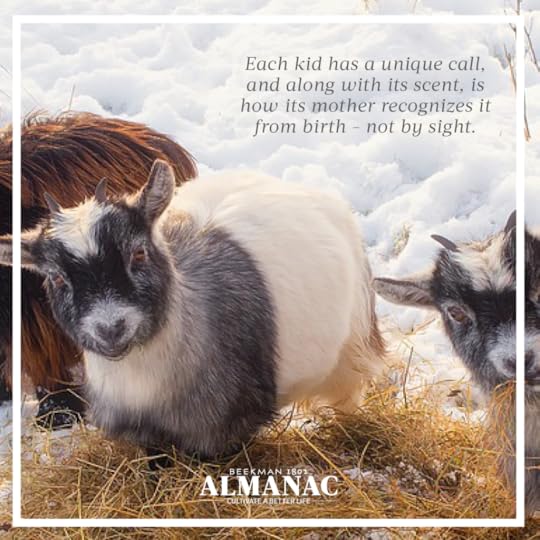


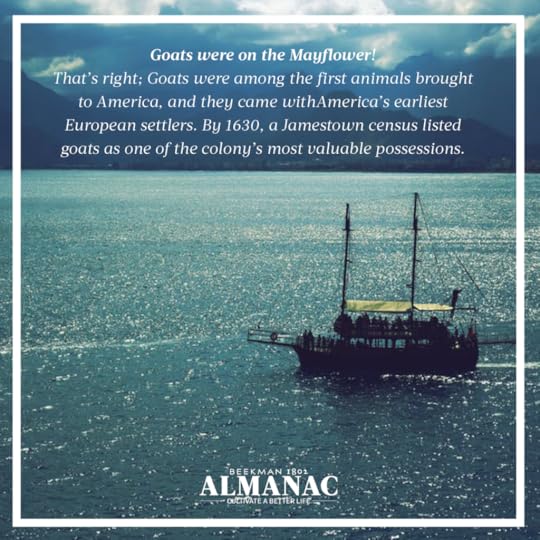
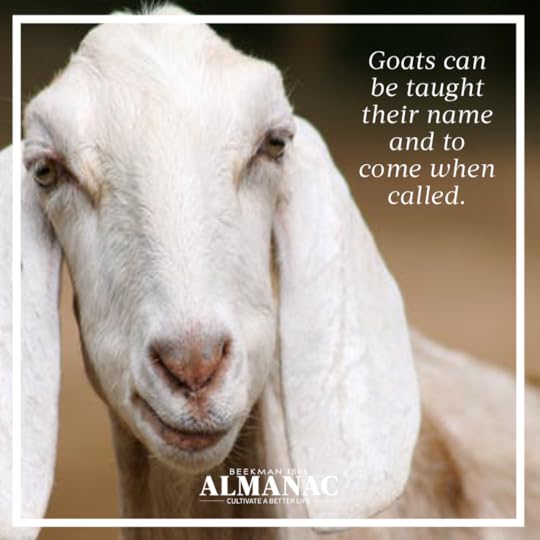
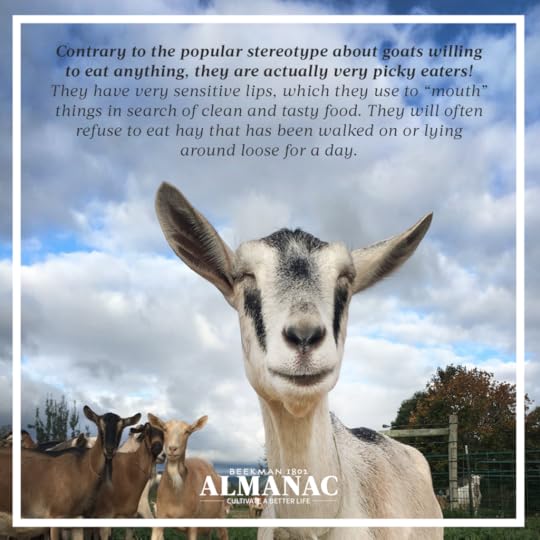
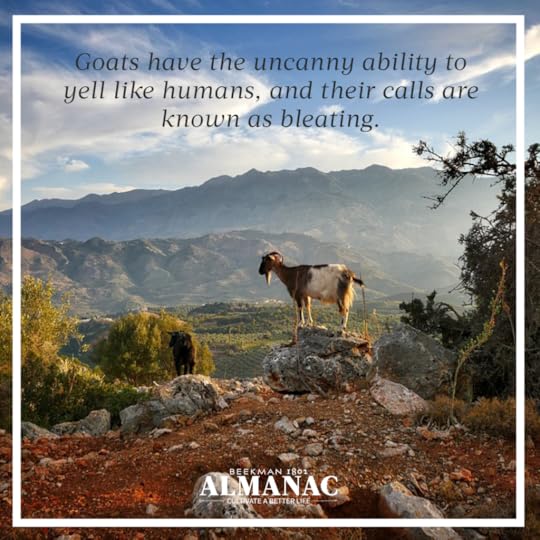
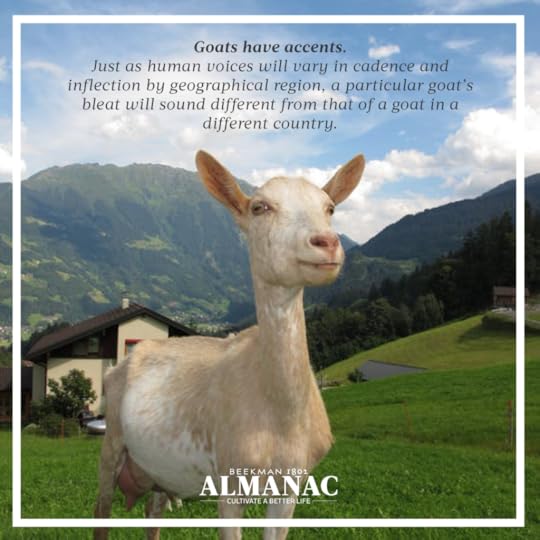
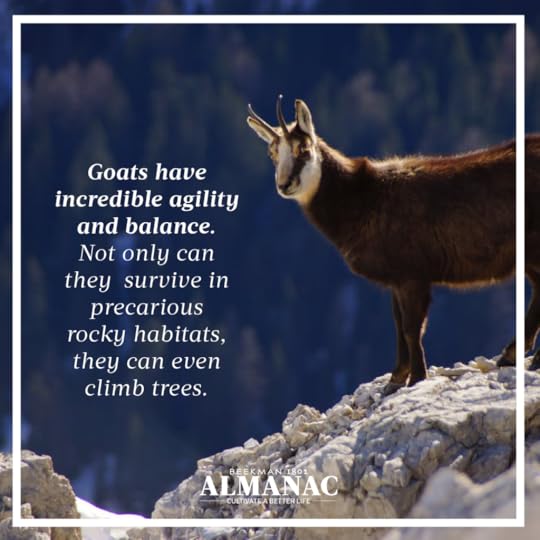


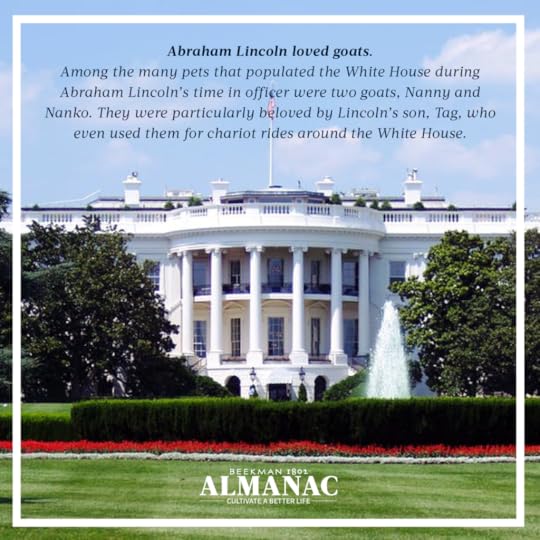
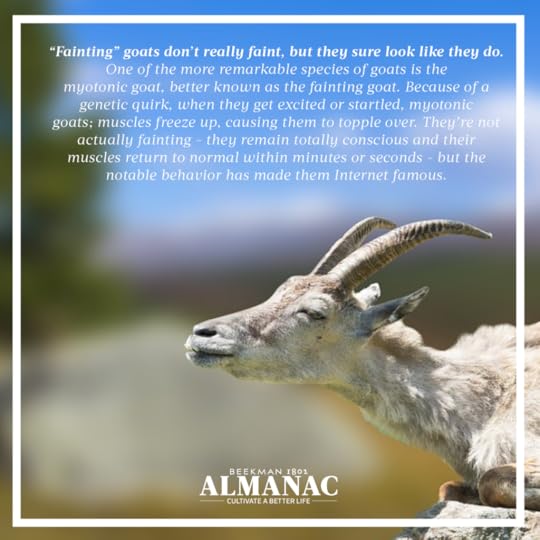
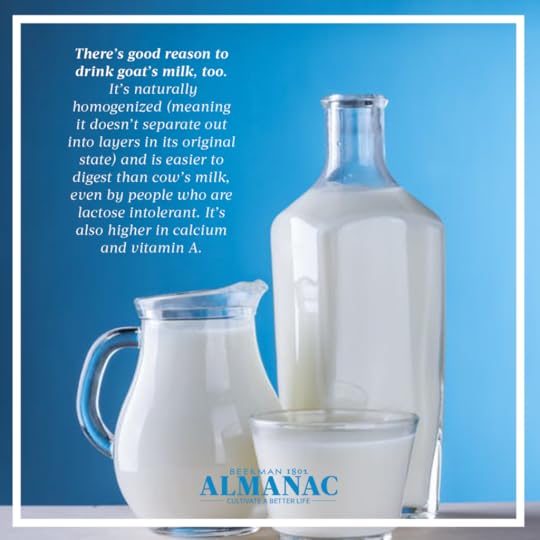
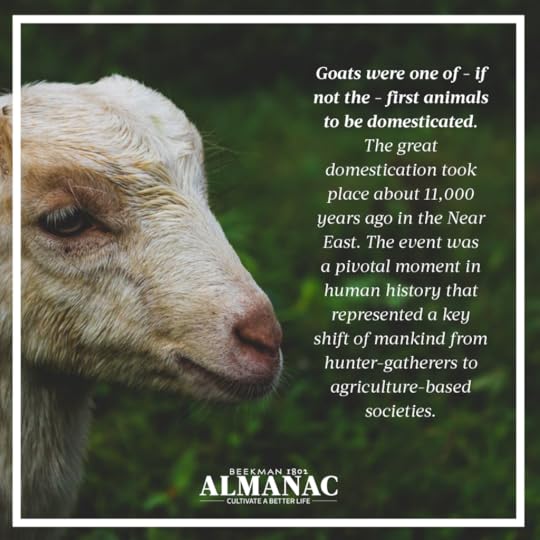
And we wouldn’t be 1802 if we didn’t give you 18 + 02…
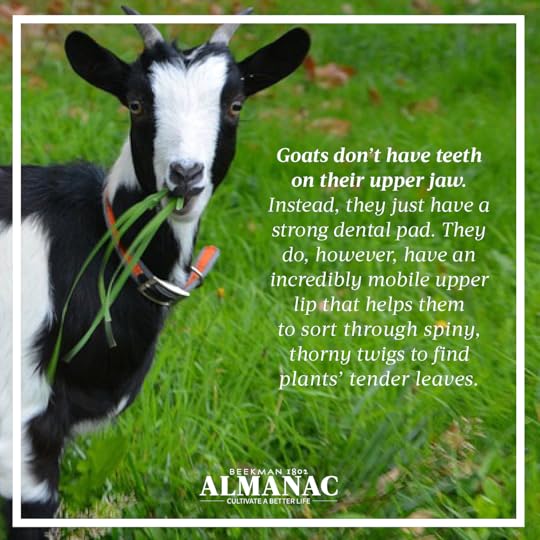
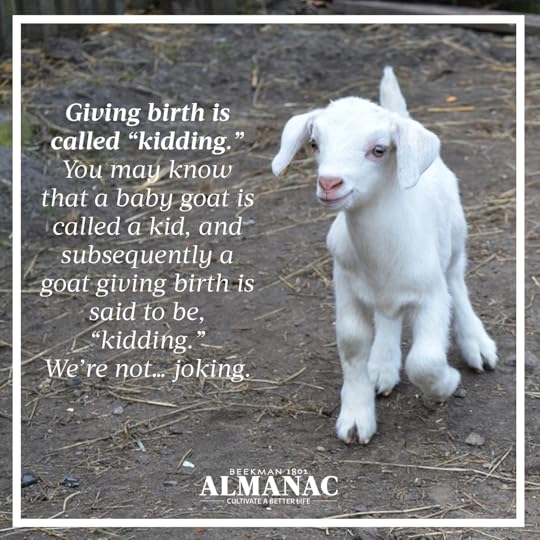
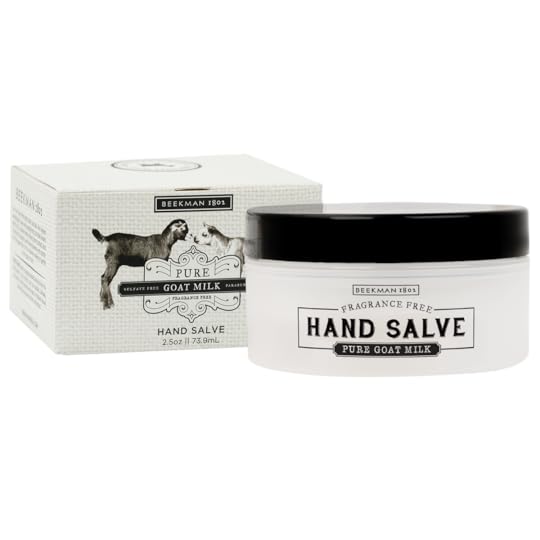
1
Pure Goat Milk Hand Salve

2
Pure Goat Milk Bar Soap
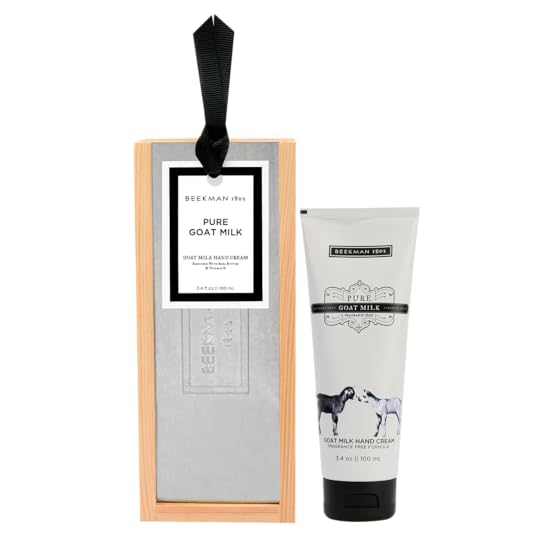
3
Pure Goat Milk Hand Cream
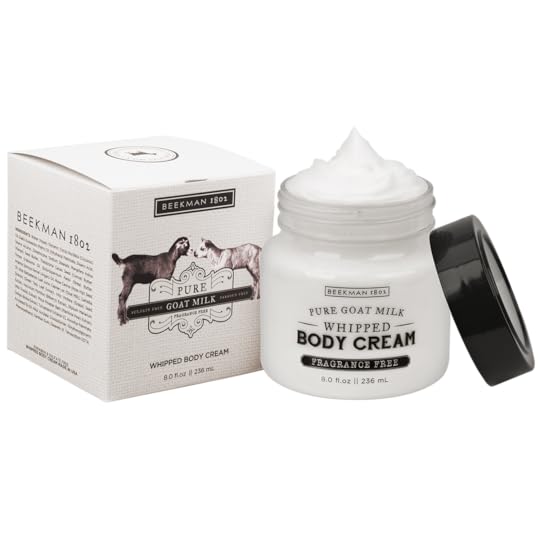
4
Pure Goat Milk Whipped Body Cream
Visit the Mercantile
The post 18 Facts about Goats appeared first on Beekman 1802 Mercantile.
Garden Party 2018
A Celebration of Everything That Grows!
The 9th Annual Sharon Springs Garden Party is May 26th & 27th from 10am – 5pm
Whether you would like to be a vendor or a visitor enjoying the bucolic scene, there is a seat at our table! Join our 100 regional artisans, farmers, food purveyors and 4,000 visiting Neighbors to mark the beginning of the growing season.
Purchase Tickets To Tour The Farm
Area Attractions, Dining & Lodging
The post Garden Party 2018 appeared first on Beekman 1802 Mercantile.



